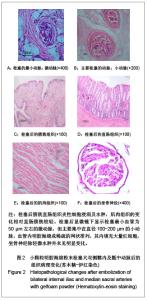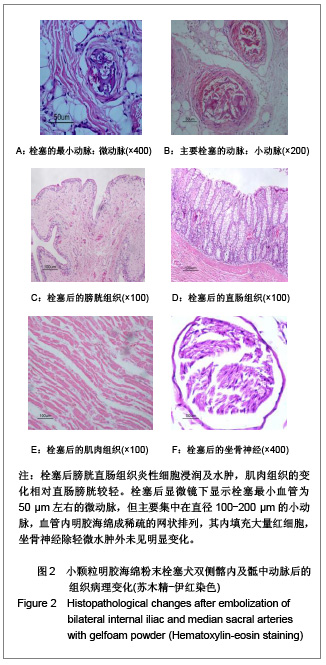| [1] NFC,Xu M,Ding YZ,et al.Zhonghua Fangshexue Zazhi. 2002; 36(7):657-660. 倪才方,徐明,丁一之,等. 选择性椎体供血动脉栓塞的动物实验研究[J].中华放射学杂志,2002,36(7):657-660.[2] Hare WS, Holland CJ. Paresis following internal iliac artery embolization. Radiology.1983;146(1): 47-51. [3] Ni FC,Yang HL,Tang TS,et al.Zhonghua Guyke Zazhi. 1997; 17(7):83-85. 倪才芳,杨惠林,唐天驷,等.骨肿瘤的经导管动脉栓塞治疗[J].中华骨科杂志,1997,17(7):83-85.[4] Turcotte RE,Sim FH,Unni KK. Giant-cell tumor of the sacrum. Clin Orthop.1993; (291):215-221. [5] Cai L,Gu JF,Wang H,et al.Linchuang Zhongliuxue Zazhi. 2000;5(1):28-30. 蔡林,顾洁夫,王华,等.介入治疗在骨盆和脊柱骨肿瘤中的应用[J].临床肿瘤学杂志,2000,5(1):28-30. [6] Yang SH,Cheng FP,Xu WH,et al.Zhonghua Guyke Zazhi. 2000;20(7):431-434. 杨述华,程福平,许伟华,等.髂内动脉栓塞后观察侧支循环重建的实验研究[J].中华骨科杂志,2000,20(7):431-434.[7] Zhang ZC,Wang JF,Wen ZL,et al. Zhonghua Guyke Zazhi. 1997;17(2):83-86. 章祖成,王继芳,文载律,等.骨肿瘤动脉栓塞后组织学初步观察[J].中华骨科杂志,1997,17(2):83-86.[8] Gellad FE,Sadato N,Numaguchi Y,et al.Vascular Metastatic Lesions of the spine : Preoperative embolization.Radiology. 1990;176(3):683-686.[9] Roscoe MW,McBroom RJ,Louis ES,et al.Preoperative embolization in the t reatment of osseous metastases from renal cell carcinoma.Clin Orthop.1989; 238:302.[10] Wang WD,Liu HJ,Li JZ,et al.Shandong Yiyao. 2009;49(14):37-38. 王卫东,刘宏建,李甲振,等.全骶骨切除联合靶血管栓塞治疗原发性巨大骶骨肿瘤(附11例报告) [J].山东医药,2009,49(14):37-38.[11] Bmaddus WC,Grady MS,Delashaw JB,et al.Preoperative superselective arteriolar embolization:a new approach to enhance respectability of spinal tumors.Neumsurgery. 1990; 27:755. [12] Lin Y,Hu J,Wu CW,et al.Yixue Yingxiangxue Zazhi. 2009; 19(7): 894-895. 林永,胡建,吴传旺,等.骶骨肿瘤术前栓塞的临床应用研究[J].医学影像学杂志,2009,19(7):894-895.[13] Wang C,Zhao J,Xu H. Zhongguo Zuzhi Gongcheng Yanjiu yu Linchuang Kangfu. 2008;12(49):9723-9725. 王聪,赵杰,徐浩.血管造影栓塞明胶海绵栓塞剂在骨盆骨折大出血中应用20例[J].中国组织工程研究与临床康复,2008,12(49):9723-9725.[14] huang VP, Soo CS, Wallace S, et al. Arterial occlusion: management of giant cell tumor and aneurysmal bone cyst. Am J Roentgenol.1981;136(6):1127-1130. |



